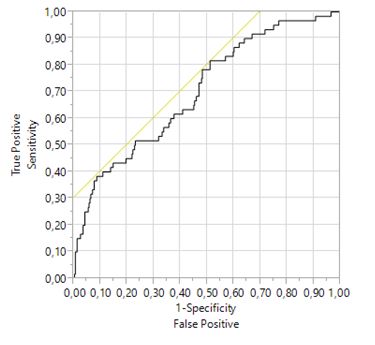Biliary Complications Following Liver Transplantation – Single-Center Experience Over Three Decades and Recent Risk Factors.
Core Facility Quality Management Transplantation, Hannover Medical School, Hannover, Germany
Meeting: 2017 American Transplant Congress
Abstract number: B195
Keywords: Bile duct, Liver transplantation, Multivariate analysis, Prognosis
Session Information
Session Name: Poster Session B: Liver Retransplantation and Other Complications
Session Type: Poster Session
Date: Sunday, April 30, 2017
Session Time: 6:00pm-7:00pm
 Presentation Time: 6:00pm-7:00pm
Presentation Time: 6:00pm-7:00pm
Location: Hall D1
This study aims to identify independent risk factors for biliary complications after liver transplantation over 3 decades in a large single center. 1607 consecutive liver transplantations were analyzed retrospectively with special interest on the recent MELD-era since 2006. Risk factors for the onset of anastomotic biliary complications were identified with multivariable binary logistic regression analyses. The identified risk factors in regression analyses were compiled into a prognostic model. The applicability was evaluated with receiver operating characteristic curve analyses.
Biliary complications were observed in 227 cases (14.1%). 417 (26%) transplantations were performed after the introduction of MELD-based donor organ allocation. Since then, 21% (n=89) of the patients suffered from biliary complications, which are further categorized into anastomotic bile leaks (46% (n=41)), anastomotic strictures (25% (n=22)), cholangitis (8% (n=7)) and non-anastomotic strictures (3% (n=3)). The remaining 18% (n=16) were not further classified. After adjustment for all univariably significant variables, the recipient MELD-score at transplantation (p=0.006; OR: 1.035; 95%-CI: 1.010 – 1.060), the development of hepatic artery thrombosis post-operatively (p=0.019; OR: 3.543; 95%-CI: 1.233 – 10.178), as well as the donor creatinine prior to explantation (p=0.010; OR: 1.003; 95%-CI: 1.001 – 1.006) were revealed as independent risk factors for biliary complications. The compilation of these identified risk factors into a prognostic model was shown to have good prognostic abilities in the investigated cohort with an AUROC of 0.702.
The proposed prognostic model is:
y = 1.030 x MELD at transplantation + 0.937 x donor BMI + 1.021 x donor bilirubin + 1.003 x donor creatinine + 1.005 x posttransplant ICU days + 3.117 x posttransplant HAT + 1.741 x male donor gender In conclusion, the parallel occurrence of high recipient MELD and impaired donor kidney function should be avoided. Risk is especially increased when post-transplant hepatic artery thrombosis occurs.
In conclusion, the parallel occurrence of high recipient MELD and impaired donor kidney function should be avoided. Risk is especially increased when post-transplant hepatic artery thrombosis occurs.
CITATION INFORMATION: Kaltenborn A, Gutcke A, Schrem H, Gwiasda J. Biliary Complications Following Liver Transplantation – Single-Center Experience Over Three Decades and Recent Risk Factors. Am J Transplant. 2017;17 (suppl 3).
To cite this abstract in AMA style:
Kaltenborn A, Gutcke A, Schrem H, Gwiasda J. Biliary Complications Following Liver Transplantation – Single-Center Experience Over Three Decades and Recent Risk Factors. [abstract]. Am J Transplant. 2017; 17 (suppl 3). https://atcmeetingabstracts.com/abstract/biliary-complications-following-liver-transplantation-single-center-experience-over-three-decades-and-recent-risk-factors/. Accessed December 16, 2025.« Back to 2017 American Transplant Congress
